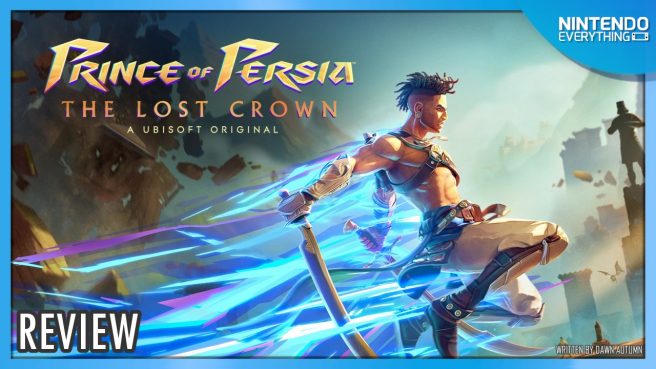System: Switch
Release date: January 18, 2024
Developer: Ubisoft
Publisher: Ubisoft
Prince of Persia: The Lost Crown came as something of a surprise when it was announced during Summer Game Fest last year. The series had been in an odd state of partially suspended animation up to that point, with the last mainline entry on consoles being 2010’s The Forgotten Sands, and the only other activity being largely ignored mobile spinoffs and the vague promises of a remake of the first game in the series. A brand new 2.5D entry was probably the last thing anyone expected, and while The Lost Crown won’t be the game that many fans were asking for, it nonetheless stands out as a fantastic entry in the series that is more than worth your time.
The Lost Crown tells the tale of Sargon, the youngest member of a group of warriors known as The Immortals. After Prince Ghassan, heir apparent to the throne, is kidnapped by one of their own, Sargon must venture into Mount Qaf to rescue him. Things are not as they seem within the cursed mountain however, as time works in mysterious ways within: years pass like seconds, and past and future can intertwine with unexpected results. After pulling you in with an explosive cinematic opener The Lost Crown’s narrative is content to take a backseat, revealing itself in small cutscenes as you explore.
A small menagerie of characters, including Sargon’s fellow Immortals, are scattered throughout the game’s world, which draws from Persian mythology to paint an intricately detailed and lore-rich world if you take the time to explore and uncover it all. Although the more important, plot-relevant details are often inscribed upon stone tablets in full view as you explore, I found that the smaller lore items that weren’t plot relevant often made things feel more alive. Although it has some twists to it, I felt the central story lacked the needed character depth to be especially compelling. Very little time is dedicated to building the motivation and backstory of the wider cast beyond Sargon and the game’s central antagonist, making your encounters with them over the course of the story feel more like forgettable flavor text than significant milestones.
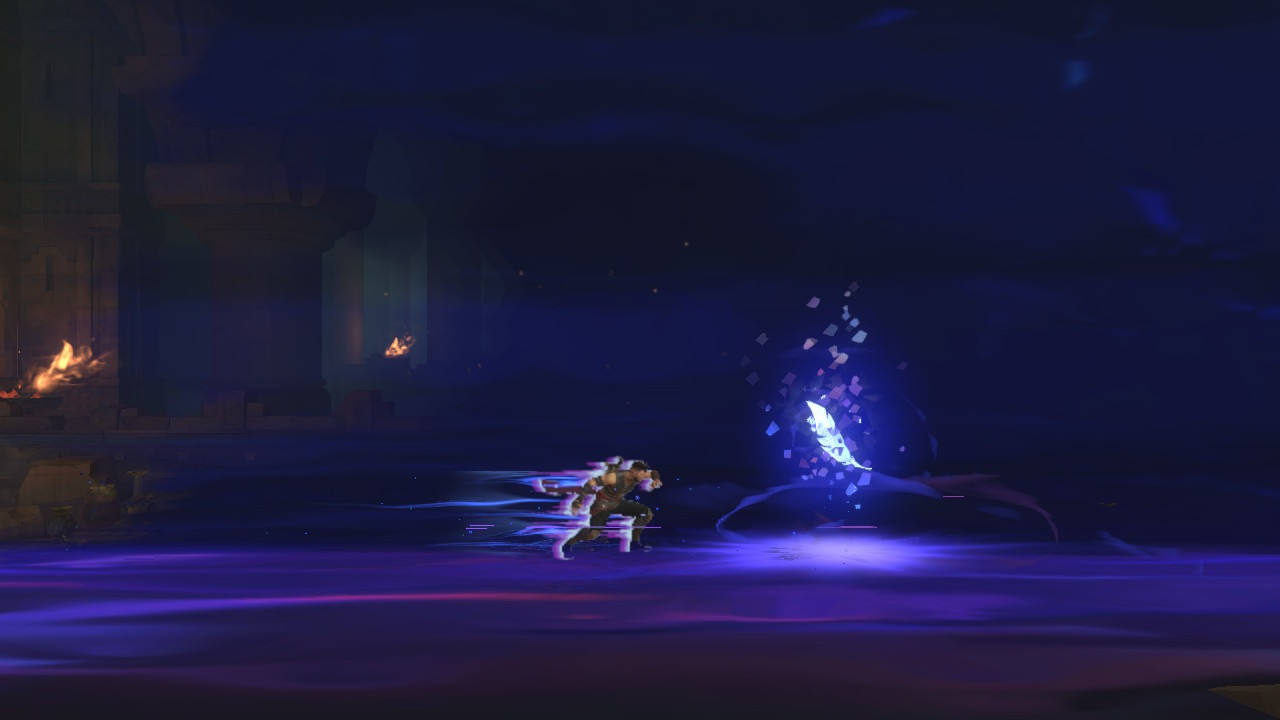
Unlike its most recent predecessors, The Lost Crown is a 2.5D side-scrolling action platformer, which gives the platforming its own unique flavor and means that a greater level of precision is generally required to overcome the various obstacles that it throws at you. Most of the powers that you acquire over the course of the game are geared towards improving your platforming capabilities, although there is some light puzzle solving involved from time to time that requires you to manipulate objects in the environment rather than avoid them. While the controls are responsive and precise, making failure feel more like a learning experience than the product of bad game design, I did feel that some of the more interesting powers were a little underutilized, due to both the late point at which you acquire them and the heavier focus on platforming over puzzle solving: the Dimensional Claw, which allows you capture and release objects and enemies, stands out in particular here as an interesting idea that is never fully realized after its initial introduction, with its only application being to capture some explosive enemies to throw them at destructible walls.
Combat in the game is fluid and highly cinematic with a heavy emphasis on combo attacks, dodging, and parrying; larger enemies will typically block Sargon’s attacks to discourage button-mashing, and have different attack types that will need to be approached in a specific way: attacks following a red flash are unblockable, and those that follow a yellow flash can be parried for a small cinematic cutscene. Variety comes in the form of Amulets, which you can find scattered around the map or purchase from the merchant in the Haven area, that provide exploration or combat-based benefits to let you adjust your abilites to either suit your playstyle or current situation; due to limited slot spaces, you will be unable to equip every Amulet you come across all at once. This adds a nice element of strategy that becomes especially relevant when playing on higher difficulties. You also have access to special attacks in Athra Surges, which can be unleashed once you’ve built up the meter through combat encounters – by default this will increase or decrease depending on how much damage you give and receive, but you can disable the reduction, as well as adjust the rate at which it builds up.
Despite marketing itself as a side-scrolling action platformer, the game’s map design draws very heavily from the Metroidvania genre, and this is often the most prominent aspect of the title. Exploration in The Lost Crown is remarkably freeform, and it was rare that I found myself unable to progress. Progression blocks do exist, as you will require abilities gained after defeating bosses in order to access some areas, but these are few and far between, and there are branching objectives later in the game that you can tackle in whichever order you see fit, giving you some agency over the way that you explore. There is very little gameplay variety between each of the biomes of Mount Qaf however, which is a little disappointing.
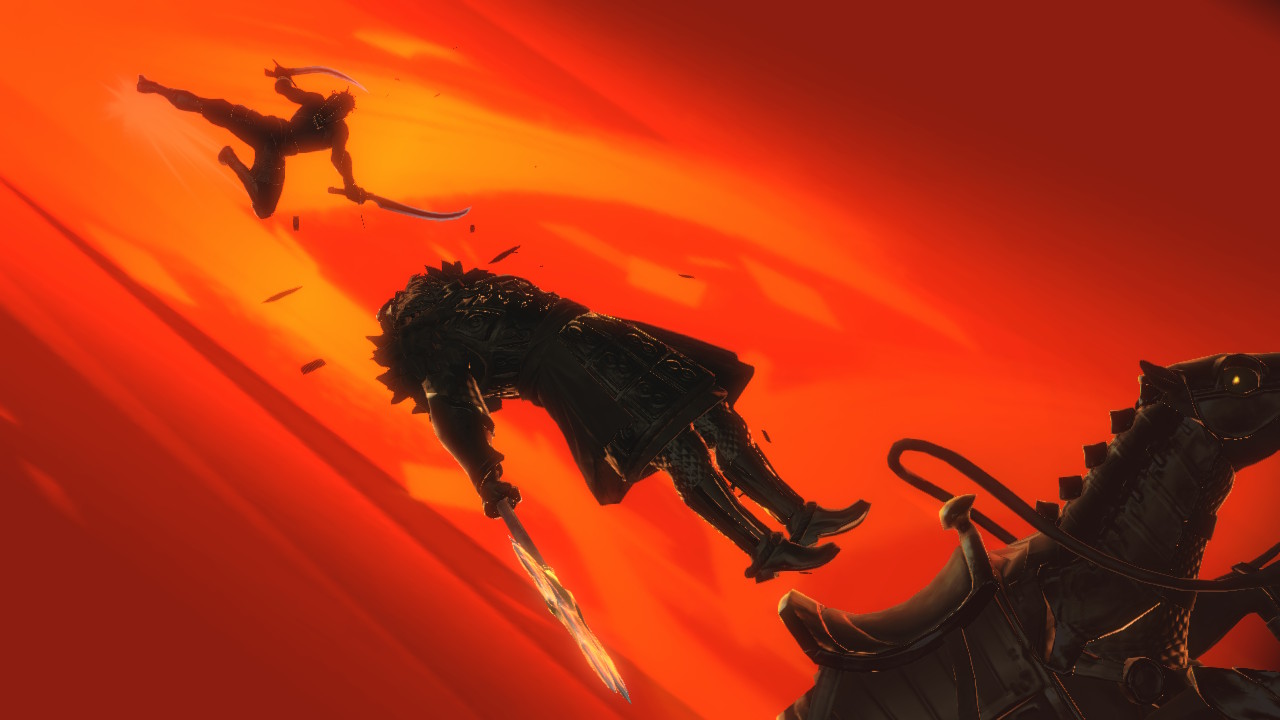
However, the Metroidvania aspects of the title are felt most keenly from the amount of backtracking that it requires you to do, the excessive number of hidden collectibles, and just how easy it is to get lost. At times, exploring Mount Qaf can feel like a needlessly overwhelming and exhausting task, slowing the pacing to a crawl. Although Wak-Wak Trees are generously spaced to prevent the frustration of needing to trek across half the map to get back to the point where you previously died, fast travel points are few and far between, meaning you will often need to do this anyway to reach your next objective.
I couldn’t help but feel at times after spending several minutes backtracking through several rooms of convoluted platforming and waves of enemies that the more elegant solution to this would have been simply to allow the player to warp between Wak-Wak Trees instead. Even utilizing “Guided Mode” I found myself taking very roundabout routes in order to get to the objective marker, which was the only benefit that the mode provided; unexplored areas of the map remaining unhelpfully blank. Fariba will sell you a local map of the area you’re in, but you’ll have to find her in that area first, which is easier said than done unless you meticulously scour every corner of an area as you progress. Although uncovering the map was generally satisfying, more could have been added to Guided Mode to make it a more distinct experience; it only provides you a general direction rather than more specific instructions, which is something players looking to focus more on other elements of the game may wish to keep in mind.
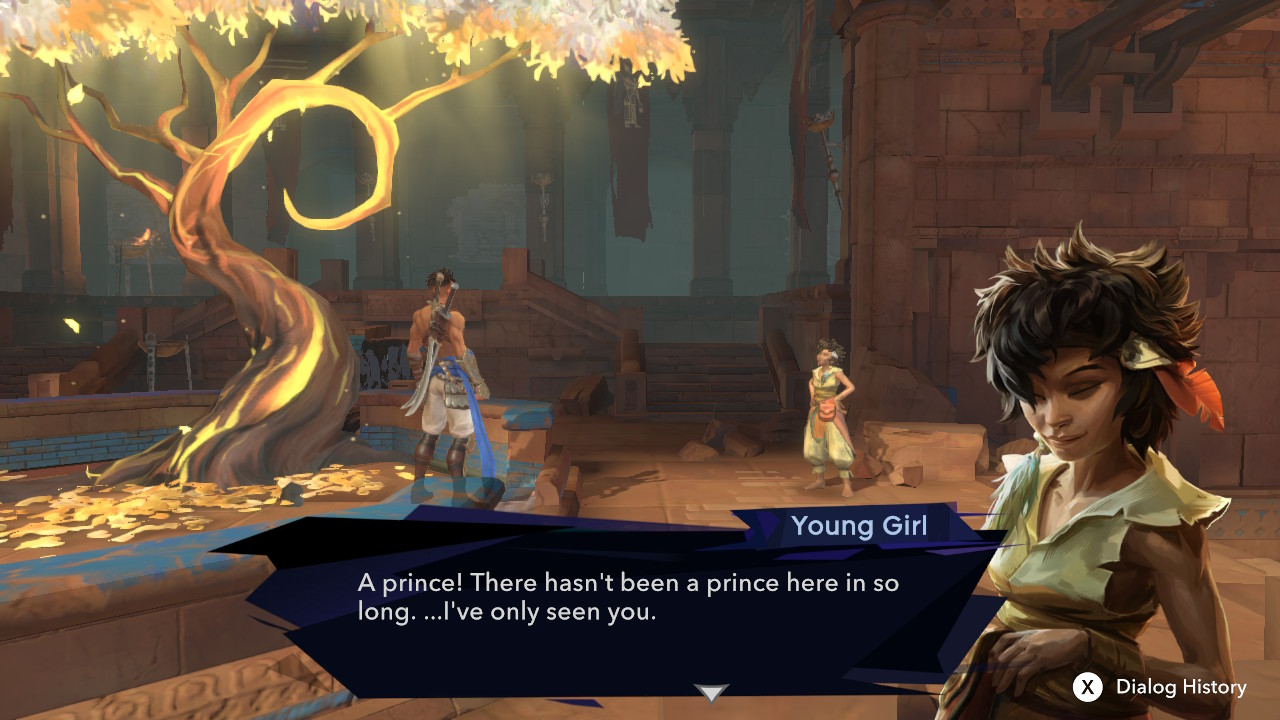
For completionists, so that you won’t forget points of interest you can’t yet reach, the game will let you take a screenshot of an area on the map with the Memory Shard feature, but this is restricted to a limited number of times. You’ll need to rely on generic symbol marks and the in-game tracker of how many collectibles you’ve acquired in an area if you want to explore everything the game has to offer if you run out of Memory Shards, which is a very clunky method of keeping track of collectibles and exploration. This is mitigated somewhat by the nature of the collectibles themselves however, with all of them serving a purpose either as part of one of the game’s extensive sidequests, or as a small tidbit that fleshes out the lore. Each one feels proportionately rewarding: if you have to run through a tough platforming segment, you can rest assured that the reward will be something more significant that will improve your combat capabilities or survivability.
The Lost Crown has a staggering array of accessibility options that I wish were standard practice for gaming as a whole, not just Metroidvanias. Alongside the recommended difficulty modes, you can also individually adjust parameters yourself, including player and enemy damage, enemy health, parry timing, and Athra accumulation, which can completely change the experience depending upon your preferences. A high contrast mode and HUD scale are also included, although the game unfortunately offers only two font choices and there isn’t a huge difference between them.
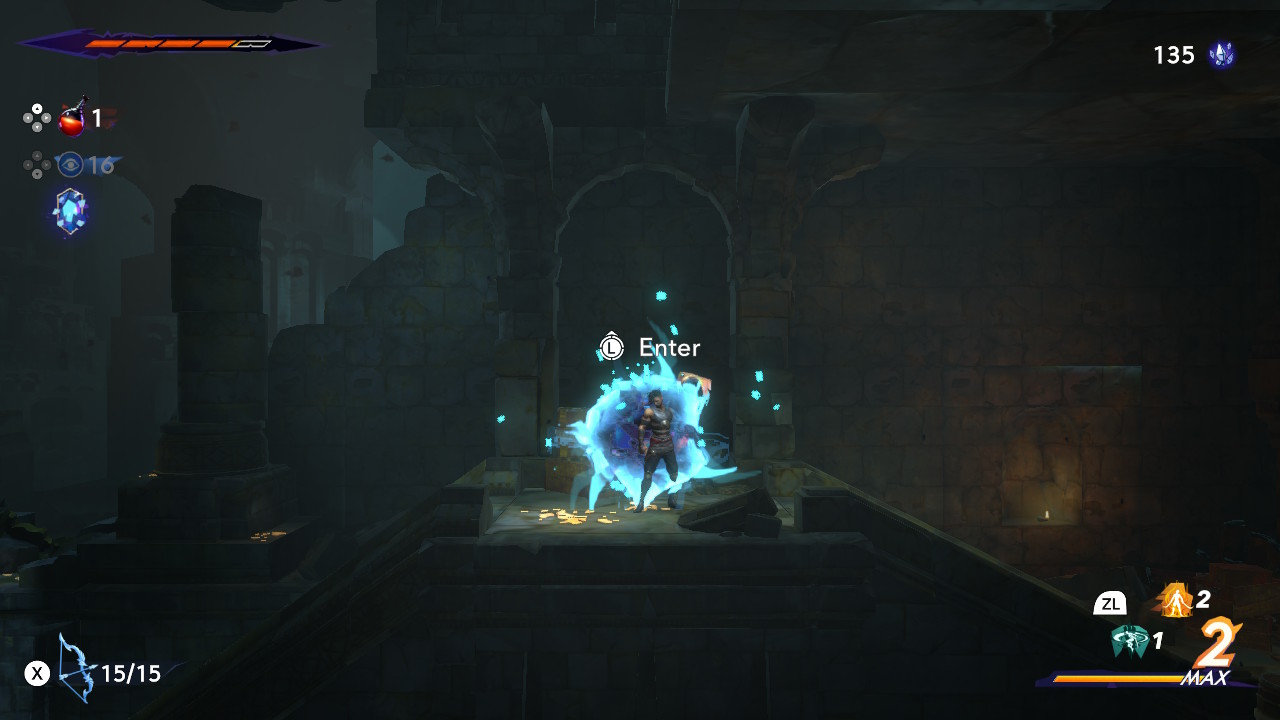
The game also allows you to bypass most of its platforming sections with Platforming Assist, which creates portals you can enter to just jump right past them to the next room. I found this to be a very welcome option indeed because it has an abundance of instant death hazards that will see you unceremoniously dumped back onto the last piece of solid ground you touched. The option to skip them outright doesn’t make these segments feel any less unbalanced if you choose to take them head-on however. Not all of these segments are skippable either, which arguably makes the ones you can’t skip far more frustrating because of it. The game also features a number of surprisingly tricky platforming-based puzzles that require a level of speed and precision that may trip up some players, and with all the accessibility options the game provides, it stands out slightly that the option to skip these puzzles wasn’t included. To some these will simply be another part of the experience, but if you wish to focus on combat this could be a point worth considering.
The Lost Crown is quite a striking game visually, although only a few of its biomes are visually distinct, and there is a notable lack of texture in some places, especially on the character models when viewed close up. But for a solid 60fps performance in both docked and handheld, many (myself included) would consider this expected reduction in visual quality a price more than worth paying, and more than many third-party Switch titles have delivered in recent years. The only noteworthy load times occur when fast-traveling between areas, but these are a few seconds at most, and I did notice a slight lag when transitioning between combat and one of the more dynamic cutscenes. These are minor complaints in the grand scheme of things however, and do little to tarnish the overall experience.
The Verdict

Prince of Persia: The Lost Crown won’t be the franchise revival that many fans will have wanted, and it doesn’t break the mold in any noteworthy fashion as either a side-scrolling action platformer or Metroidvania. However, it doesn’t really need to, and it stands out as one of the most fantastically accessible titles in the genre thanks to its plethora of options that cater to players of all skill types and temperaments, prioritizing an individual’s experience and sense of fun. It offers some very polarized choices to that end, but the fact that it offers them at all is noteworthy. Although it is let down slightly by its visuals when compared versions on other systems, its performance on Switch is near-perfect, and makes both its combat and platforming feel smooth and satisfying throughout. It may not be the game that fans were expecting, but it more than lives up to the legacy of its predecessors.
Prince of Persia: The Lost Crown copy provided by the publisher for the purposes of this review.
